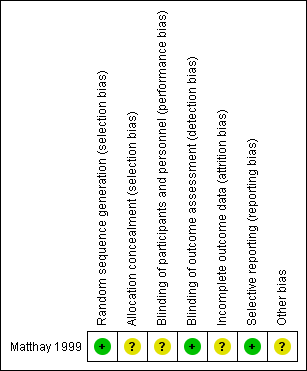Contenido relacionado
Revisiones y protocolos relacionados
Bilgehan Yalçin, Leontien CM Kremer, Elvira C van Dalen | 5 octubre 2015
Frank Peinemann, Elvira C van Dalen, Heike Enk, Godelieve AM Tytgat | 24 abril 2019
Rick Admiraal, Marcel van der Paardt, Jasmijn Kobes, Leontien CM Kremer, Gianni Bisogno, Johannes HM Merks | 8 diciembre 2010
Lianne M Havemana, Roelof van Ewijk, Elvira C van Dalen, Willemijn B Breunis, Leontien CM Kremer, Henk van den Berg, Uta Dirksen, Johannes HM Merksa | 2 septiembre 2021
Lianne M Havemana, Roelof van Ewijk, Elvira C van Dalen, Willemijn B Breunis, Leontien CM Kremer, Henk van den Berg, Uta Dirksen, Johannes HM Merksa | 2 septiembre 2021
Erna MC Michiels, Antoinette YN Schouten‐Van Meeteren, François Doz, Geert O Janssens, Elvira C van Dalen | 1 enero 2015
Kathelijne CJM Kraal, Elvira C van Dalen, Godelieve AM Tytgat, Berthe LF Van Eck‐Smit | 21 abril 2017
Cindy Farquhar, Jane Marjoribanks, Russell Basser, Sarah E Hetrick, Anne Lethaby | 20 julio 2005
Kathrin Buder, Matthias Zirngibl, Sascha Bapistella, Joerg J Meerpohl, Brigitte Strahm, Dirk Bassler, Marcus Weitz | 27 septiembre 2022
Frank Peinemann, Doreen A Kahangire, Elvira C van Dalen, Frank Berthold | 19 mayo 2015
Respuestas clínicas Cochrane
Simone Mocellin, Sera Tort | 26 septiembre 2017









